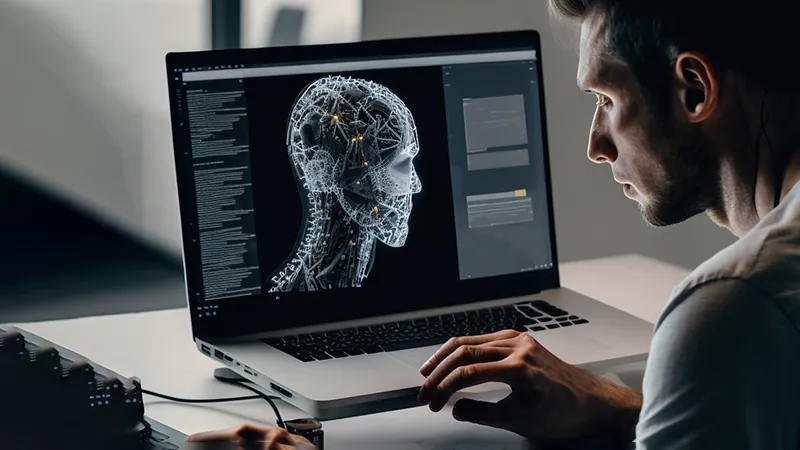How to Apply Machine Learning Techniques to Real-World Problems
From Theory to Practice: A Step-by-Step Guide to Applying Machine Learning to Real-World Problems
Posted: Feb. 22, 2023 • 5 mins read • Author: Adams Pierre David

Introduction
The area of machine learning is expanding quickly and has the potential to transform a wide range of industries. Businesses and organizations are eager to use these potent tools to solve real-world issues, from healthcare to finance. Yet there are a few important factors that must be taken into account when moving from theory to practice, which can be difficult.
Step 1: Define the Problem
Clearly defining the issue you're seeking to solve is the first step in applying machine learning to a real-world issue. A thorough understanding of the domain and the data that will be utilized to train the model is necessary for this. It is crucial to comprehend the problem's goals, conditions, and restrictions as well as the information and materials that are at your disposal. You can utilize this knowledge to choose the right machine learning algorithms and methodologies. Consider the diagnosis of breast cancer as an illustration of a real-world issue.
The challenge is determining from mammography scans whether a patient has breast cancer or not. The goal is to reduce false positives (misdiagnosing a patient who does not have cancer) and false negatives (incorrectly diagnosing a patient with cancer). The requirement is to develop a machine learning model with high accuracy. The data available includes mammography images of patients with and without breast cancer.
Step 2: Prepare the Data
Once the problem has been defined, the data must be prepared. This includes cleaning, transforming, and pre-processing the data so that it can be used for machine learning. Preparing data is an important step that can consume up to 80% of the time spent on a machine learning project. It is critical to ensure that the data is consistent, accurate, and relevant to the problem at hand.
The mammography images are preprocessed in our case to remove any artifacts, and the breast region is segmented from the image. To prepare the data for modeling, relevant features such as the size and shape of the lesion, texture, and density are extracted. To ensure consistency and relevance to the problem, the data is normalized and scaled.
Step 3: Choose the Right Algorithm
There are numerous machine learning algorithms to choose from, and determining which one is best for your problem can be difficult. The algorithm chosen will be determined by the nature of the problem, the available data, and the project's resources and constraints. Linear regression, decision trees, random forests, support vector machines, and neural networks are examples of common algorithms.
The chosen algorithm in our illustration is a convolutional neural network (CNN), which is suitable for image classification problems. The CNN can automatically learn the features of mammography images and classify them as cancerous or non-cancerous.
Step 4: Train the Model
After the data has been prepared and the appropriate algorithm has been chosen, the model must be trained. This entails teaching
the machine learning algorithm how to make predictions using the data. To ensure that the model generalizes well, it is critical to use a training set that is representative of real-world data and to validate it using a test set.
To return to our breast cancer example, the CNN model is trained on a labeled dataset of mammography images from patients with and without breast cancer. The model is trained using a subset of the available data, with the remainder set aside for testing and validation.
Step 5: Evaluate and Refine the Model
After training the model, the next step is to evaluate its performance and make any necessary adjustments. This includes assessing its ability to generalize to new data, as well as measuring its accuracy, precision, recall, and F1 score. The model can be fine-tuned or even retrained if necessary, using different algorithms or parameters.
In our example, the model is evaluated on the test set. If the model's performance is inadequate, it can be improved by adjusting the parameters or experimenting with different algorithms such as support vector machines or decision trees.
Step 6: Deploy the Model
The model is ready to be deployed in the real world once it has been refined. This entails incorporating the model into the organization's existing systems and processes, as well as tracking its performance over time.
In our case, once the model has been refined and proven to be accurate, it is used in hospitals and clinics to diagnose breast cancer in patients. The mammography images are fed into the model, which then calculates the likelihood that the patient has breast cancer. A radiologist or oncologist confirms the diagnosis.
Conclusion
When applying machine learning techniques to real-world problems, several factors must be carefully considered, including problem definition, data preparation, algorithm selection, model training, and deployment. Organizations can reap the benefits of machine learning and use these powerful techniques to solve complex problems and drive business growth by following these steps and implementing best practices.


